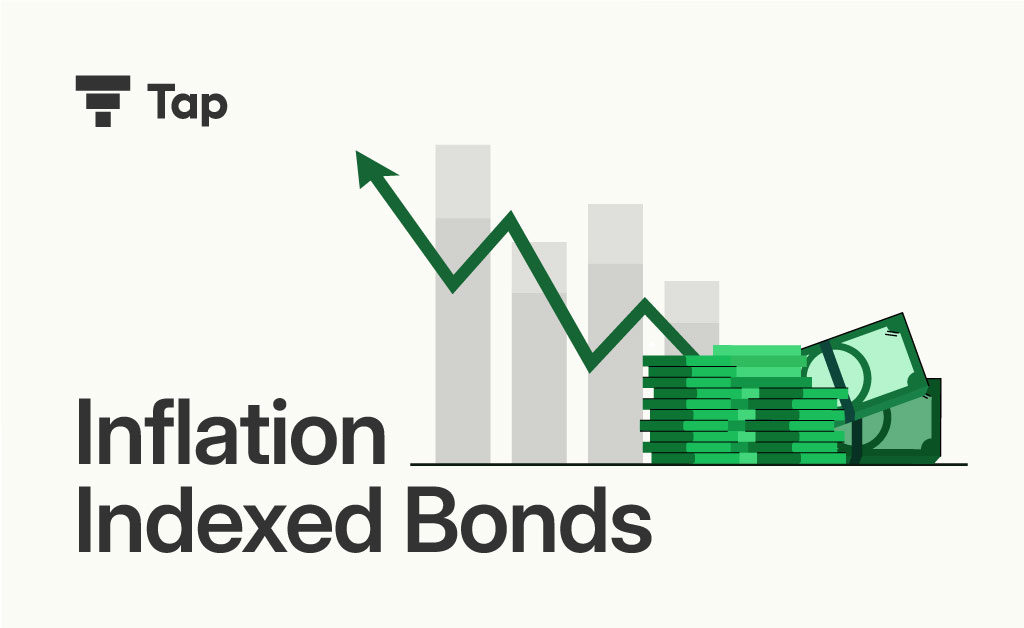What Are Inflation-Indexed Bonds? A Guide to Protecting Your Investments from Inflation

Introduction:
In a world of uncertain economic conditions and fluctuating prices, preserving the real value of your investments is paramount. One effective way to guard against the eroding effects of inflation is through inflation-indexed bonds. These bonds, designed to protect both principal and interest from inflation, offer a unique and often underappreciated investment option. This blog delves into what inflation-indexed bonds are, how they work, their advantages and disadvantages, and why they could be a valuable addition to your investment portfolio.
Understanding Inflation-Indexed Bonds
Inflation-indexed bonds, also known as inflation-linked bonds or real return bonds, are fixed-income securities whose principal and interest payments are adjusted based on inflation. The primary aim of these bonds is to provide investors with a return that is protected against inflation, ensuring that the purchasing power of their investment does not diminish over time.
The most notable examples of these bonds include:
- Treasury Inflation-Protected Securities (TIPS) in the United States.
- Inflation-linked Gilts in the United Kingdom.
- Inflation-linked Bonds (ILBs) in Australia.
- French OATi and OAT€i bonds in France.
How Do Inflation-Indexed Bonds Work?
Inflation-indexed bonds have a unique mechanism for protecting against inflation. The key components include:
- Principal Adjustment: The bond’s principal is adjusted based on changes in a designated inflation index, such as the Consumer Price Index (CPI). If inflation rises, the principal increases; if deflation occurs, the principal decreases.
- Interest Payments: These are calculated based on the adjusted principal, meaning that as inflation causes the principal to grow, the interest payments grow as well. Typically, these bonds pay a fixed coupon rate on the inflation-adjusted principal.
- Maturity Value: At maturity, the investor is repaid the adjusted principal amount or the original principal, whichever is higher, ensuring the principal is protected against deflation.
Key Benefits of Inflation-Indexed Bonds
- Inflation Protection: The most significant advantage is the protection against inflation. Since both the principal and interest payments are indexed to inflation, investors are assured that their purchasing power is maintained.
- Stable Real Returns: Unlike regular bonds, where inflation can erode real returns, inflation-indexed bonds provide a more stable real rate of return. This makes them an attractive option for long-term savers and retirees.
- Diversification: These bonds add a layer of diversification to an investment portfolio. They tend to have a low correlation with other asset classes like equities and traditional fixed-income securities, providing a buffer during economic downturns.
- Deflation Floor: Many inflation-indexed bonds, including TIPS, have a deflation floor, ensuring that the principal repayment at maturity will be at least the original amount invested, protecting against deflationary periods.
Drawbacks of Inflation-Indexed Bonds
- Lower Nominal Returns: Typically, the nominal yields on inflation-indexed bonds are lower than those on comparable non-indexed bonds because they offer the added benefit of inflation protection. Investors looking for higher immediate returns might find this less appealing.
- Complexity and Taxation: The adjustments to principal and interest payments can be complex to understand and manage. Additionally, in some jurisdictions, the inflation adjustments can be taxable annually, even though the investor does not receive these adjustments as cash until maturity or sale.
- Interest Rate Risk: Like all bonds, inflation-indexed bonds are subject to interest rate risk. If interest rates rise, the price of these bonds can fall, although the inflation adjustment can mitigate this risk to some extent.
- Market Risk: While the principal is protected against inflation, the market price of these bonds can fluctuate based on supply and demand dynamics and changes in the inflation outlook.
Why Invest in Inflation-Indexed Bonds?
Inflation-indexed bonds can be a valuable addition to an investment strategy, especially for those concerned about inflation eroding the value of their savings. Here’s why you might consider them:
- Long-Term Savings: For long-term goals like retirement, these bonds can ensure that the purchasing power of your savings is preserved.
- Retirement Income: Retirees can benefit from the stable real returns that inflation-indexed bonds offer, protecting their income from inflation.
- Risk Management: They provide a hedge against inflationary periods, which can be a crucial risk management tool for an investment portfolio.
How to Invest in Inflation-Indexed Bonds
Investors can access inflation-indexed bonds in several ways:
- Direct Purchase: You can buy them directly from the government during auctions or through the secondary market.
- Exchange-Traded Funds (ETFs): There are ETFs that focus specifically on inflation-indexed bonds, providing diversified exposure without the need to buy individual bonds.
- Mutual Funds: Similar to ETFs, mutual funds can offer diversified portfolios of inflation-indexed bonds.
- Savings Bonds: In some countries, government savings bonds also offer inflation protection features, like the U.S. Series I Savings Bonds.
Conclusion:
In a world where inflation can erode the real value of investments, inflation-indexed bonds offer a secure and reliable way to preserve and grow your wealth. By providing returns that keep pace with inflation, these bonds ensure that your purchasing power is maintained over time. While they come with their own set of risks and complexities, their benefits make them a compelling option for many investors, particularly those with a long-term horizon or a low tolerance for inflation risk. Whether you’re looking to diversify your portfolio, protect your retirement savings, or simply hedge against inflation, inflation-indexed bonds are worth considering.
Don’t let inflation erode your savings. Explore TapInvest today to discover how you can earn better returns and keep your investments secure. Visit TapInvest now and take control of your financial future!
